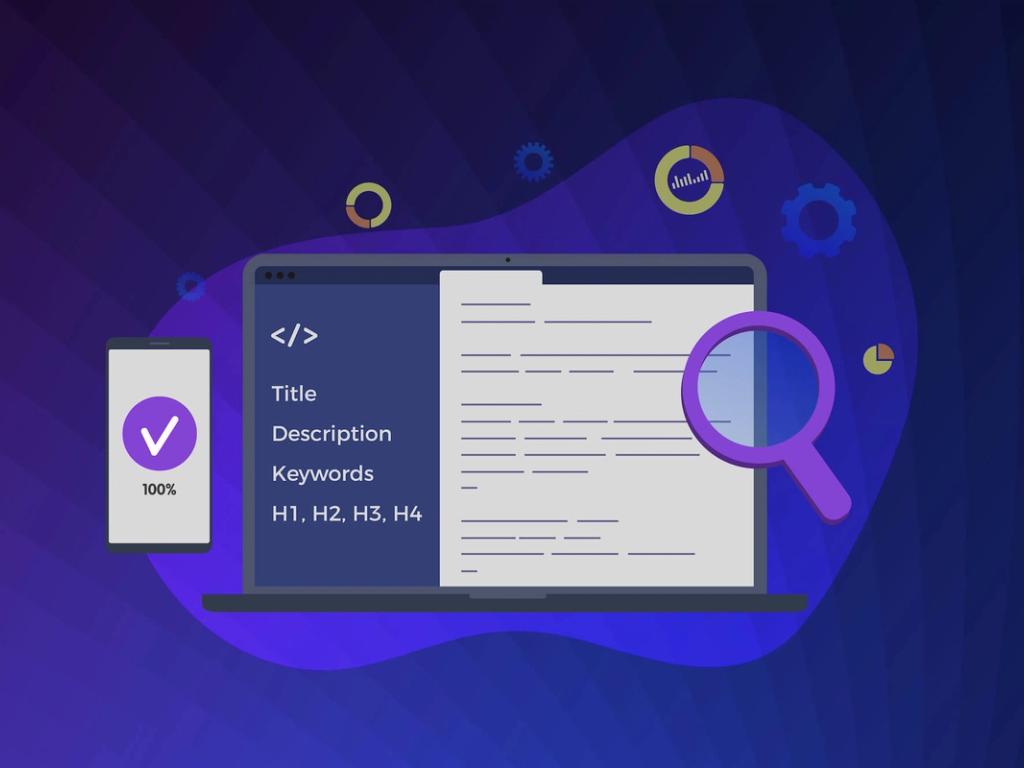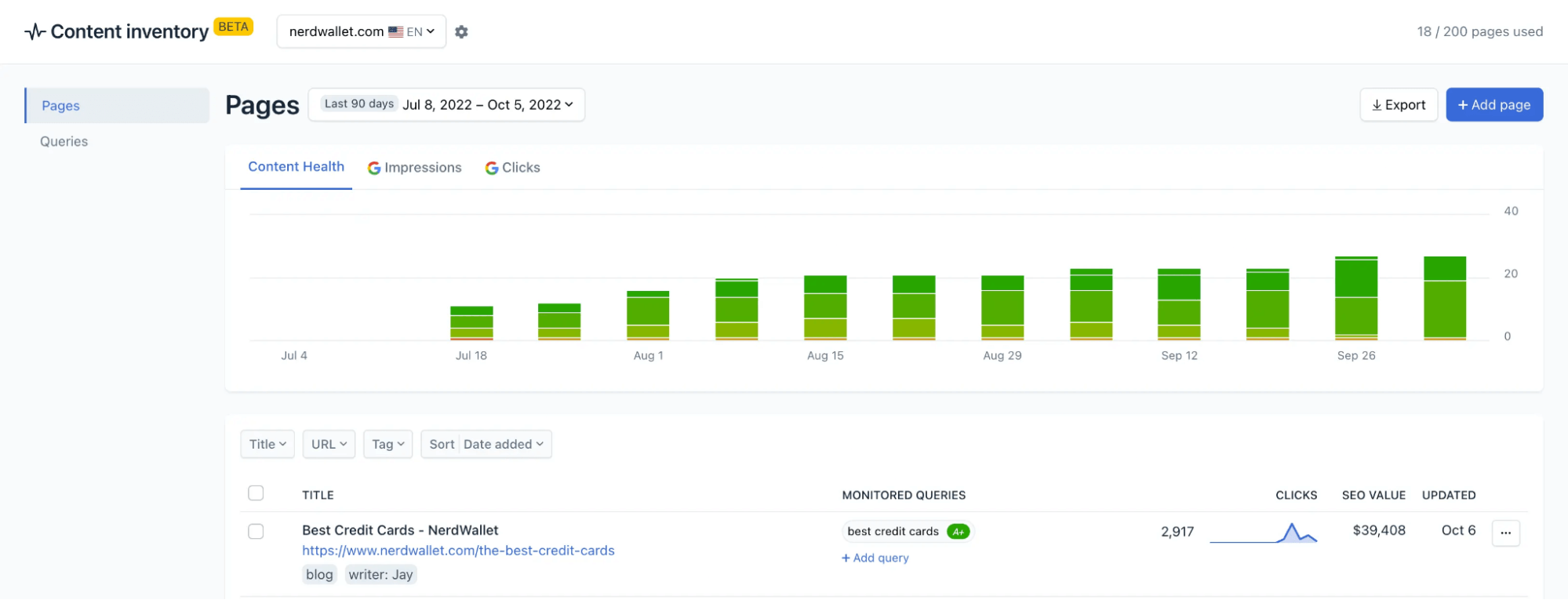
Table of Contents
Join our newsletter
Get access to trusted SEO education from the industry's best and brightest.
There are two aspects of managing on-page SEO:
You need on-page SEO checkers to analyze existing site content and pinpoint pages with SEO issues or unoptimized content.
You need tools to check on-page SEO during content creation, so you can publish SEO-friendly content (and reach the first page of Google sooner).
We walk through the process and review solutions for both categories so you can audit website content, clean up your site, and learn the best ways to create SEO-friendly site content.
Clearscope is content optimization software with features to guide keyword research, write SEO-optimized content, and monitor on-page SEO scores. You can explore our SEO tools in Clearscope’s Essentials Plan or schedule a free demo to discuss your website issues and see where our tool can support your teams.
Before getting started…
The first step in checking on-page SEO is to build your content inventory — aka the list of all of the web pages that exist on your site (including blog content, product pages, website resources pages, your homepage, and any other pages you want to keep an eye on).
This way you can get a general idea of what lives on your site before you begin checking SEO scores and auditing content. A well-built content inventory provides organization while auditing on-page SEO and gives you a foundation to build upon as you publish new content.
Assembling a content inventory requires some legwork but has many benefits:
It supports the content audit process (later in this guide) because it allows you to keep track of website URLs and critical SEO metrics in one place.
You can see all the content that lives on your site — nothing slips under the radar, and you can avoid overlap when planning new content.
You can identify low-performing content and add it to your list for updates.
You can monitor content and on-page SEO to keep your site competitive (and prevent rankings or organic traffic from dipping).
To build your content inventory, you can use an XML site map generator (like Screaming Frog) to gather all of the URLs from your site — then you can export the report to a spreadsheet.

Screaming Frog is a free SEO crawler that can also analyze page titles and meta descriptions, find broken links and expired redirects in content, detect robots and directives that block web pages, pinpoint duplicate content, and audit hreflang attributes. You can configure the crawler to extract this data so you have less information to gather during the page audit.
Learn more here: How to Create a Content Inventory & Perform a Content Audit
Check real-time SEO scores with Clearscope’s Content Inventory
Clearscope offers a user-friendly Content Inventory dashboard so you can add URLs from your sitemap and check the SEO scores of your web pages in real-time.
Within Clearscope, simply:
Save web pages to the dashboard by pasting the URL.
Create tags to store additional data with URLs (like author, published date, last updated, or other SEO metrics).
Add the page’s target keyword to view the current SEO score.

You can pop into this dashboard at any time to check the most current SEO scores. Our platform considers search engine results pages, algorithm updates, competitor content, and rank changes to show you how page content performs in SERPs.
With these insights, it’s easy to tell which web pages need attention; if you notice low or declining scores, you can flag those pages for updates.
You can save new URLs to this dashboard as you publish content and then monitor all site content and take action to prevent SEO scores from slipping.
But before you proceed with updating page content, we suggest completing a more comprehensive on-page SEO audit so you can identify all on-page SEO issues and opportunities to improve content performance.
Use Sitechecker to audit page content

Now it’s time to dive deeper into page content by performing an on-page SEO audit — we recommend Sitechecker's SEO analysis tools for this step.
This platform complements the tools above by reviewing SEO elements across page content and delivering clear recommendations to improve site SEO. It’s simple to use; just enter the page URL to generate an SEO report and see what needs improvement.
Sitechecker reports include feedback on the following:
HTTP status code
HTML size
Meta tags
SEO title length
Meta description
Headings and subheadings
Word count
Text-to-code ratio
All of the links within content — internal links and external links, including the anchor text used with links — so you can make updates accordingly
Media — like images and videos — so you can pinpoint unoptimized media and replace or update it (large assets slow down page load speed)
Alt-text
Pagespeed insights

We should note — Sitechecker offers extra SEO tools, including:
A website crawler to improve technical SEO and page optimization — this website audit tool reviews URL structure, crawlability, page indexing, page speeds, bots, canonical links, and more to help you address technical issues on the back end of your site.
Site monitoring to alert you of SEO issues (before they create real problems).
A rank tracker to monitor where your website ranks for specific search queries.
A backlink tracker so you can see which sites link back to you, remove toxic links, and modify link building strategies.
You can get started by selecting the package that suits your requirements; they have price points for many budgets.
As we mentioned, it’s easy to understand Sitechecker reports and see how to make improvements, so by this point, you should:
Know which web pages have low SEO scores and need attention.
Understand the SEO issues you need to address across site pages.
Have a list of web pages on your radar for updates.
From here, you can begin updating content to improve SEO!
Use Clearscope’s real-time SEO reports to reoptimize site content (and create new SEO-friendly content)

Clearscope’s SEO reports show you how to update and write optimized content. Plus, you can always see your current SEO score as you work.
Here’s the process:
Run a report for the target keyword and paste your site content.
We display your current SEO grade, readability level, and word count; we’ll also highlight all relevant keywords within the content so you know what’s already covered.
We provide a list of recommended terms to include in the page headers and content, so you can easily understand how to best refresh content for SEO.
Filter the terms list by “Unused” to determine what remains and reoptimize content.
The terms list and SEO score will update as you make edits so you can see when content is fully optimized.
Our insights show you exactly how to update the actual page content, and you can follow on-page strategies from Sitechecker reports to ensure you’re covering all bases. To bring SEO scores to an ‘A’, you’ll want to refresh page content, replace internal links, change anchor text, and update in-line media.
When you’re done updating content, you can push changes to your site, and the page’s SEO score will automatically update in the Content Inventory. Then, if scores dip again, you can follow these same steps.
You can also use Clearscope Reports to create new SEO-friendly content — reports guide each step of content development, from SERP research and competitor analysis to writing and editing content. Reports include:
Research tab — our AI analyzes SERP results for target keywords to gather insights about essential themes, snippets, search intent, and competitor content.
Competitor analysis — we pull data from the posts ranking in the top (1-30) positions so you can assess who you’re competing with in the SERP, view competitor SEO scores, develop your content strategy, and build your outline.
Terms and phrases — we show you exactly what topics and terms to cover so that you can write optimized content that appeals to user intent and touches on relevant topics.
Clearscope Reports simplify SEO (whether updating site pages or creating new content), so you don’t have to stress about “following SEO best practices.” You can keep your focus on the actual writing process — making high-quality edits, performing spelling and grammar checks, and polishing content for scannability.
Our reports don’t overwhelm you with recommendations; you aren’t battling keyword stuffing or forcing terms into content. We even use natural language processing so you can use variations of our terms and still achieve an ‘A’ grade. This helps you to maintain high quality content while still “writing for search engines.”
You can learn more about creating optimized content in our demo below:
Before updating or publishing site content, review our checklist below to ensure you’ve addressed critical on-page SEO elements.
Checklist to edit page content for SEO
As we’ve mentioned, content quality is one of the most important ranking factors when considering Google’s algorithm — if content isn’t genuinely relevant, unique, and helpful, it won’t make it to page one or stay in the top rankings for long.
Aside from checking the quality of the content you’re publishing, you should also scan through your post and review:
The SEO title tag and meta description. You usually plug this in the CMS before publishing; ensure your titles and meta descriptions meet length requirements and include the relevant target keyword.
Internal links. How many internal links does the content include? Where do the links take readers?
External links. Are you linking to sites with high DA ratings? Are external links relevant to the content?
Anchor text. Is it clear where links take readers? Does anchor text include relevant keywords? Teams often make the mistake of using unclear anchor text for the sake of including a link; adding links helps SEO, but you shouldn’t place them where it’s unnatural.
Media. Content should include supporting media (like images, infographics, and videos) to supplement copy and improve the user experience.
Alt-text. Include descriptive alt-text with in-line media to tell Google what media includes and improve content accessibility (for readers with assistive technologies or for times where page content doesn’t render properly).
Before publishing, also consider the post’s readability — you don’t want to throw long walls of text at readers or bury important points.
Break long sections into smaller, easier-to-read blurbs, use bullets to break down complex ideas, and use bolding to emphasize important details. Improving scannability and readability keeps readers engaged, and engagement metrics like time spent on page are key indicators of content quality.
After you confirm that your content checks these boxes, you’re ready to publish!
Read more: 10-Step Checklist for SEO Content Editing (with Guided Reports)
Getting started with Clearscope’s on-page SEO platform
Clearscope Content Inventory and Content Reports let you check and monitor page SEO and make effective updates when re-optimizing content. Staying on top of your site content helps you avoid SEO issues and significant maintenance.
Another perk to Content Inventory is that you know when to update content, as all content requires a refresh now and then. You can see when SEO scores slip, audit content, and make updates; Content Inventory eliminates guesswork, supports your SEO strategy, and allows you to use your time productively.
You can begin building your inventory and auditing content by getting started with one of our plans. If you’re interested in learning more about Clearscope and want to see our SEO tools in action, you can schedule a free demo.




